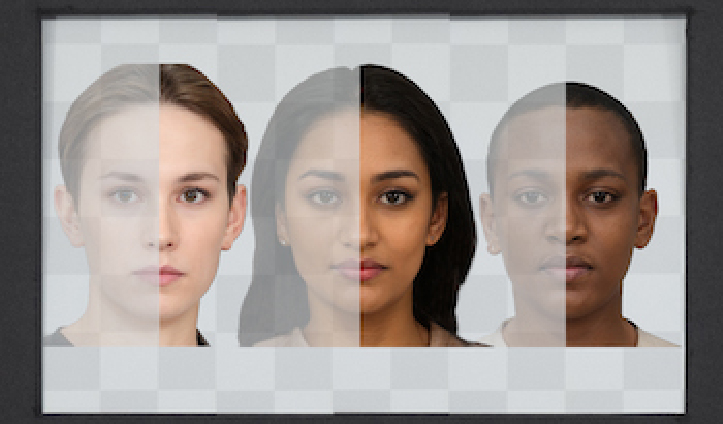References
1Benitez-QuirozC. F.SrinivasanR.MartinezA. M.2018Facial color is an efficient mechanism to visually transmit emotionProc. Natl. Acad. Sci.115358135863581–610.1073/pnas.1716084115
2DoroodchiM.RamosP.EricksonA.FuruyaH.BenjaminJ.BruderG.WelchG. F.2022Effects of optical see-through displays on self-avatar appearance in augmented realityEEE Int’l. Symposium on Mixed and Augmented Reality Adjunct (ISMAR-Adjunct)352356352–6IEEEPiscataway, NJ10.1109/ISMAR-Adjunct57072.2022.00077
3DownsT.MurdochM. J.2001Color layer scissioning in see-through augmented realityProc. IS&T CIC29: Twenty-Ninth Color and Imaging Conf.606560–5IS&TSpringfield, VA10.2352/issn.2169-2629.2021.29.60
4FreiwaldJ. P.KatzakisN.SteinickeF.2018Camera time warp: Compensating latency in video see-through head-mounted-displays for reduced cybersickness effectsIEEE Int’l. Symposium on Mixed and Augmented Reality Adjunct (ISMAR-Adjunct)495049–50IEEEPiscataway, NJ10.1109/ISMAR-Adjunct.2018.00032
5GaoC.LinY.HuaH.2013Optical see-through head-mounted display with occlusion capabilityProc. SPIE8735107115107–15
6
7HasantashM.Lafer-SousaR.AfrazA.ConwayB. R.2019Paradoxical impact of memory on color appearance of facesNat. Commun.10301010.1038/s41467-019-10073-8
8Hincapié-RamosJ. D.IvanchukL.SridharanS. K.IraniP.2014SmartColor: Real-time color correction and contrast for optical see-through head-mounted displaysProc. IEEE ISMAR187194187–94IEEEPiscataway, NJ10.1109/ISMAR.2014.6948426
9IshiharaA.AgaH.IshiharaY.IchikawaH.KajiH.KawasakiK.KobayashiD.KobayashiT.NishidaK.HamasakiT.MoriH.2023Integrating both parallax and latency compensation into video see-through head-mounted displayIEEE Trans. Vis. Comput. Graphics29282628362826–3610.1109/TVCG.2023.3247460
10JackR. E.SchynsP. G.2015The human face as a dynamic tool for social communicationCurr. Biol.25R621R634R621–3410.1016/j.cub.2015.05.052
11JonesB. C.DeBruineL. M.FlakeJ. K.LiuzzaM. T.AntfolkJ.ArinzeN. C.NdukaiheI. L.BloxsomN. G.LewisS. C.ForoniF.WillisM. L.2021To which world regions does the valence–dominance model of social perception apply?Nat. Human Behav.5159169159–6910.1038/s41562-020-01007-2
12JonesA. L.KramerR. S. S.WardR.2012Signals of personality and health: The contributions of facial shape, skin texture, and viewing angleJ. Exp. Psychol.: Hum. Percept. Perform.38135313611353–6110.1037/a0027078
13KraftJ. M.BrainardD. H.1999Mechanisms of color constancy under nearly natural viewingProc. Natl. Acad. Sci.96307312307–1210.1073/pnas.96.1.307
14LiC.LiZ.WangZ.XuY.LuoM. R.CuiG.MelgosaM.BrillM. H.PointerM.2017Comprehensive color solutions: CAM16, CAT16, and CAM16-UCSCol. Res. Appl.42703718703–1810.1002/col.22131
15LiZ.MurdochM.2022Improving naturalness in transparent augmented reality with image gamma and black levelProc. Color Imaging Conf.30147152147–5210.2352/CIC.2022.30.1.27
16LittleA. C.JonesB. C.WaittC.TiddemanB. P.FeinbergD. R.PerrettD. I.ApicellaC. L.MarloweF. W.2008Symmetry is related to sexual dimorphism in faces: Data across culture and speciesPLoS ONE3e210610.1371/journal.pone.0002106
17MaS.SunR.LiuY.WangY.SongW.2023Effect of surrounding objects in the adapting scene on chromatic adaptationOpt. Express31185871859818587–9810.1364/OE.489341
18MichelsonA. A.Studies in Optics1927University of Chicago PressChicago36
19MurdochM. J.2020Brightness matching in optical see-through augmented realityJ. Opt. Soc. Am. A37192719361927–36
20PeckT. C.GoodJ. J.EricksonA.BynumI.BruderG.2022Effects of transparency on perceived humanness: Implications for rendering skin tones using optical see-through displaysIEEE Trans. Vis. Comput. Graphics28217921892179–89
21PhillipsF.EganE. J. L.PerryB. N.2009Perceptual equivalence between vision and touch is complexity dependentActa Psychol.132259266259–6610.1016/j.actpsy.2009.07.010
22PhillipsF.CasellaM. W.EganE. J. L.
23RhodesM. G.AnastasiJ. S.2012The own-age bias in face recognition: A meta-analytic and theoretical reviewPsychol. Bull.138146174146–7410.1037/a0025750
24RinnerO.GegenfurtnerK. R.2000Time course of chromatic adaptation for color appearance and discriminationVis. Res.40181318261813–2610.1016/S0042-6989(00)00050-X
25StephenI. D.PerrettD. I.ElliotA. J.FairchildM. D.FranklinA.2015Color and face perceptionHandbook of Color Psychology585602585–602Cambridge University PressCambridge
26TanK. W.StephenI. D.2013Colour detection thresholds in faces and colour patchesPerception42733741733–4110.1068/p7499
27ThorstensonC. A.PazdaA. D.ElliotA. J.2017Subjective perception of color differences is greater for faces than non-facesSoc. Cogn.35299312299–31210.1521/soco.2017.35.3.299
28ThorstensonC. A.PazdaA. D.2021Facial coloration influences social approach-avoidance through social perceptionCogn. Emotion35970985970–8510.1080/02699931.2021.1914554
29ZhangL.MurdochM. J.2021Perceived transparency in optical see-through augmented reality2021 IEEE Int’l. Symposium on Mixed and Augmented Reality Adjunct (ISMAR-Adjunct)115120115–20IEEEPiscataway, NJ10.1109/ISMAR-Adjunct54149.2021.00033
30ZoniosG.BykowskiJ.KolliasN.2001Skin melanin, hemoglobin, and light scattering properties can be quantitatively assessed in vivo using diffuse reflectance spectroscopyJ. Invest. Dermatol.117145214571452–710.1046/j.0022-202x.2001.01577.x

 Find this author on Google Scholar
Find this author on Google Scholar Find this author on PubMed
Find this author on PubMed